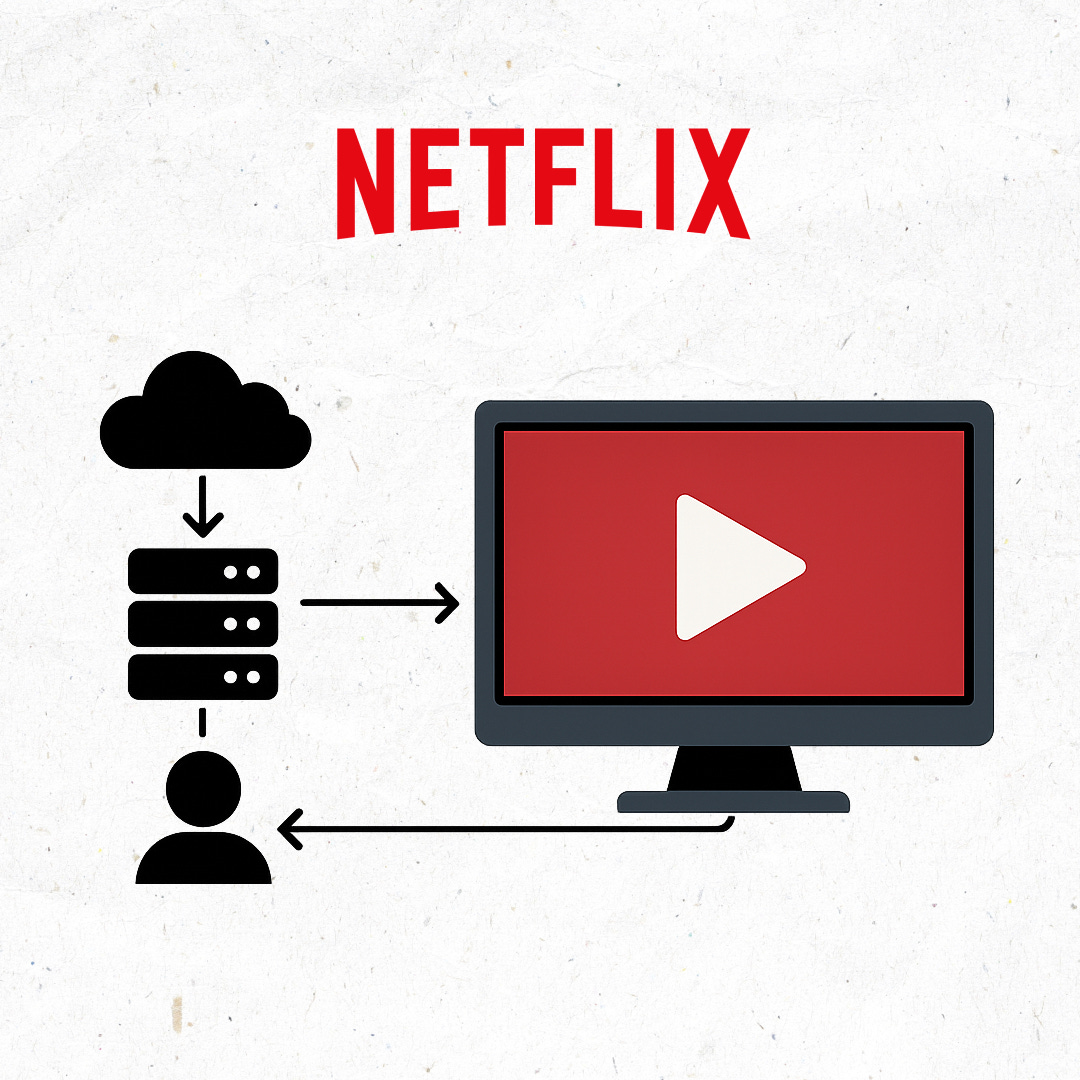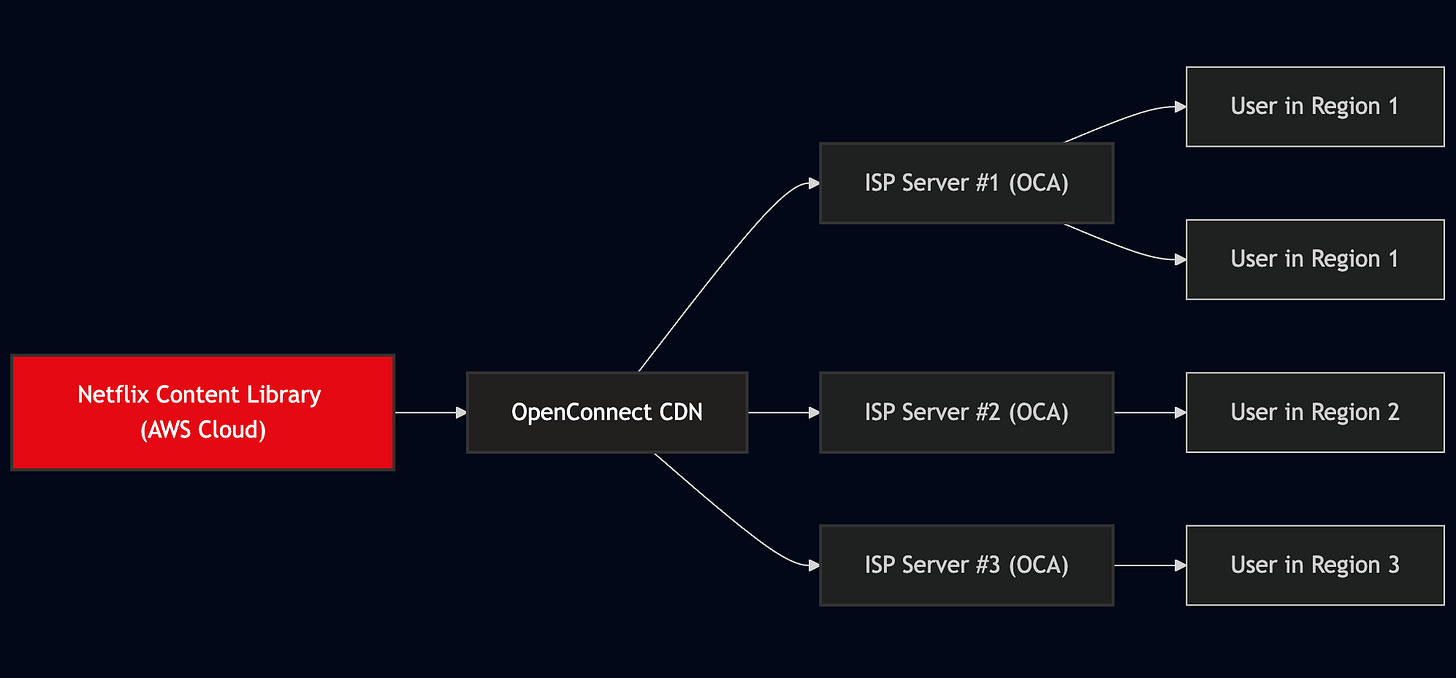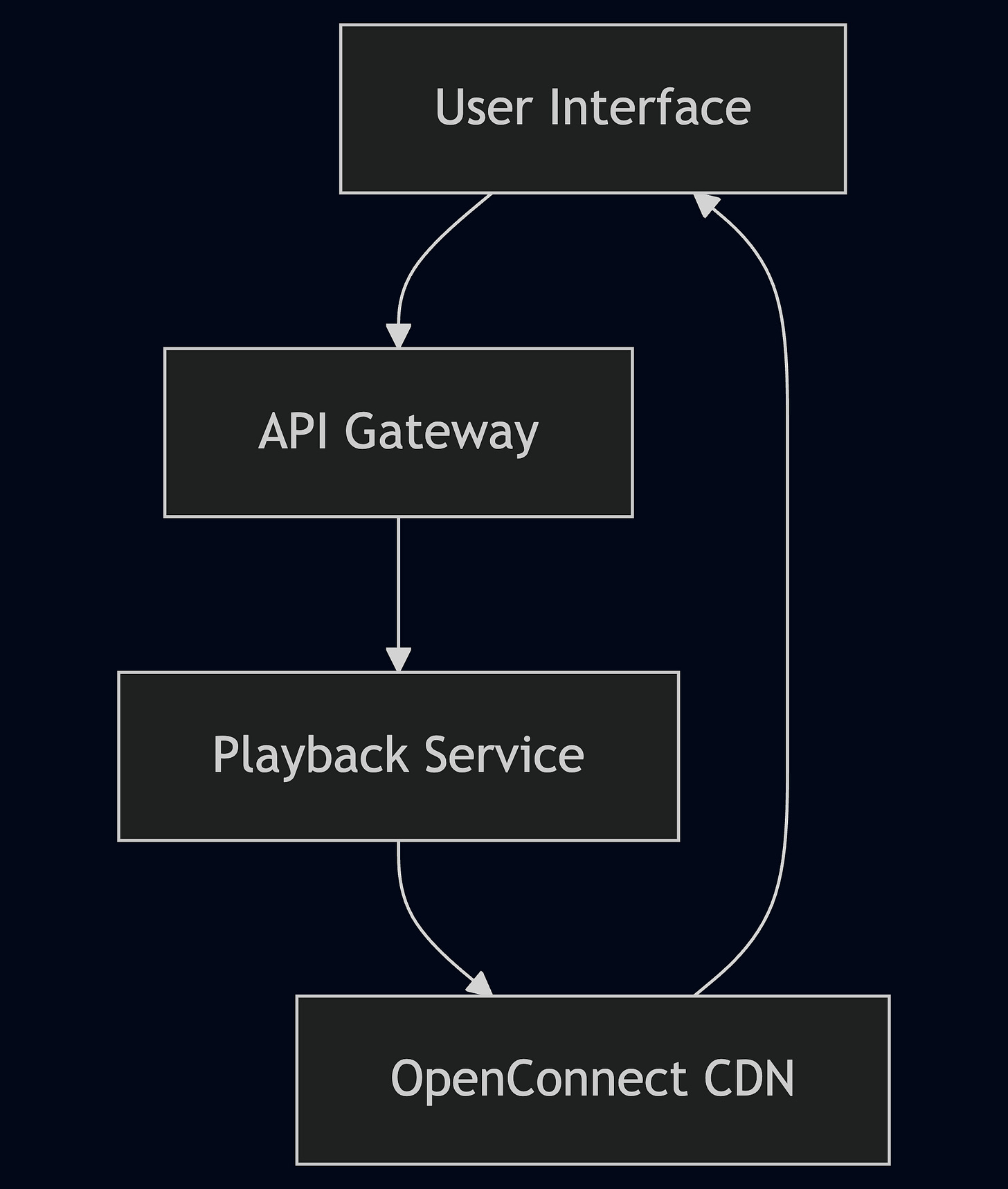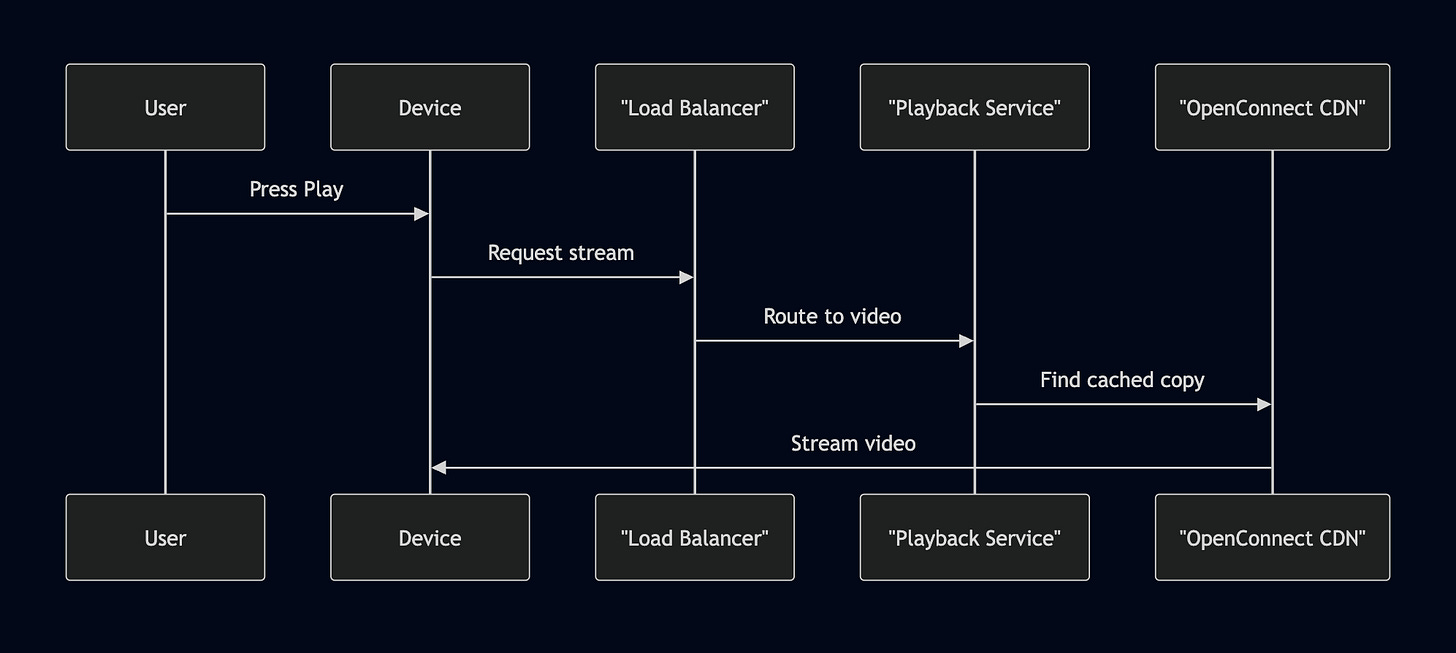How it all works #1: How Netflix Streams Lightning-Fast Video to Millions
The tech behind Netflix’s lightning-fast streams — and how you can build a simplified version yourself.
🎯 What Is the Outcome?
When you press play on Netflix, your video loads almost instantly. Even during busy Friday nights, there’s barely any buffering or delay. This seamless experience is the result of an optimised, global content delivery system that ensures:
Fast-loading video with minimal buffering
Consistent quality across devices and locations
The ability to handle millions of users at once
Let’s look at how it all works under the hood.
🔧 How Does It Work Behind the Scenes?
1. Content Is Cached Near You
Netflix uses its own content delivery network (CDN), called Open Connect, which stores popular shows and movies closer to viewers. Instead of pulling every stream from the cloud, Netflix installs Open Connect Appliances (OCAs) directly within internet service provider (ISP) networks. These are physical servers that cache in-demand content locally.
Because the most-watched titles are already near your region, the stream doesn’t have to travel across the globe. This greatly reduces latency and buffering.
2. Playback Requests Are Handled by Specialised Services
When you press play, your device doesn’t talk directly to the video server. It first goes through Netflix’s API Gateway, which routes the request to the Playback Service. This service handles things like checking licensing, quality preferences, and stream availability. It then redirects the device to the nearest Open Connect server that has the video cached.
This separation ensures the video only starts streaming once the system confirms it’s ready and optimised.
3. Traffic Is Balanced Across the Network
Netflix uses advanced load balancers to prevent any single server or data centre from being overloaded. These systems distribute incoming playback requests to the best-performing server based on geography, current traffic, and caching status.
This allows Netflix to deliver consistent video quality, even during high-demand moments like global releases.
⚙️ What Technologies Power the Streaming?
While Netflix uses many technologies overall, here are the key tools and systems involved specifically in serving video content efficiently:
Open Connect
Netflix’s custom CDN that delivers over 95% of its video traffic. It uses OCAs deployed inside ISP networks to cache popular content close to users.Playback Service
A microservice responsible for determining how and where a stream should be delivered. It handles stream authorisation and provides URLs to cached video.Elastic Load Balancing (AWS)
Manages how traffic is distributed across Netflix’s services and directs playback requests to the most optimal data centre or OCA.AWS Cloud Storage (for origin video)
Netflix stores its full video catalog in the cloud. These master files are used to populate Open Connect servers during off-peak hours.Dynamic Routing Logic
Netflix continuously monitors network conditions and redirects users to the best available source for each stream.
🛠️ How Could You Build Your Own?
If you're building a video streaming platform and want similar performance principles, here’s a scaled-down version of Netflix’s approach:
Use a CDN
Store your video files on a content delivery network like Cloudflare, AWS CloudFront, or Fastly. This helps reduce latency by serving content from edge locations.Implement Local Caching
For frequently accessed content, consider deploying edge servers or regional caches. Tools like Varnish or NGINX with cache-control headers can help.Build a Playback Service
Before delivering video, route playback requests through a backend service to handle access control, stream variants (e.g. HD or SD), and analytics.Use Load Balancing
Deploy load balancers to distribute requests across your infrastructure. This prevents server overload and ensures redundancy.Store Origin Files in Object Storage
Use S3, Google Cloud Storage, or Azure Blob Storage to store your original high-resolution video files. Use background jobs to pre-populate CDN caches.
🎬 Final Thoughts
Netflix’s streaming speed and reliability come from a combination of smart caching, localised content delivery, and distributed traffic control. These strategies make sure your show loads instantly and plays smoothly, even when millions of others are watching too.
If you're building your own streaming platform, borrowing these patterns can help you create a fast and reliable experience for your users without needing Netflix-level infrastructure.





